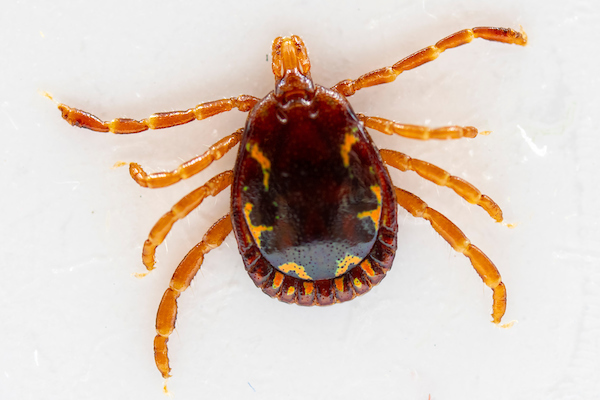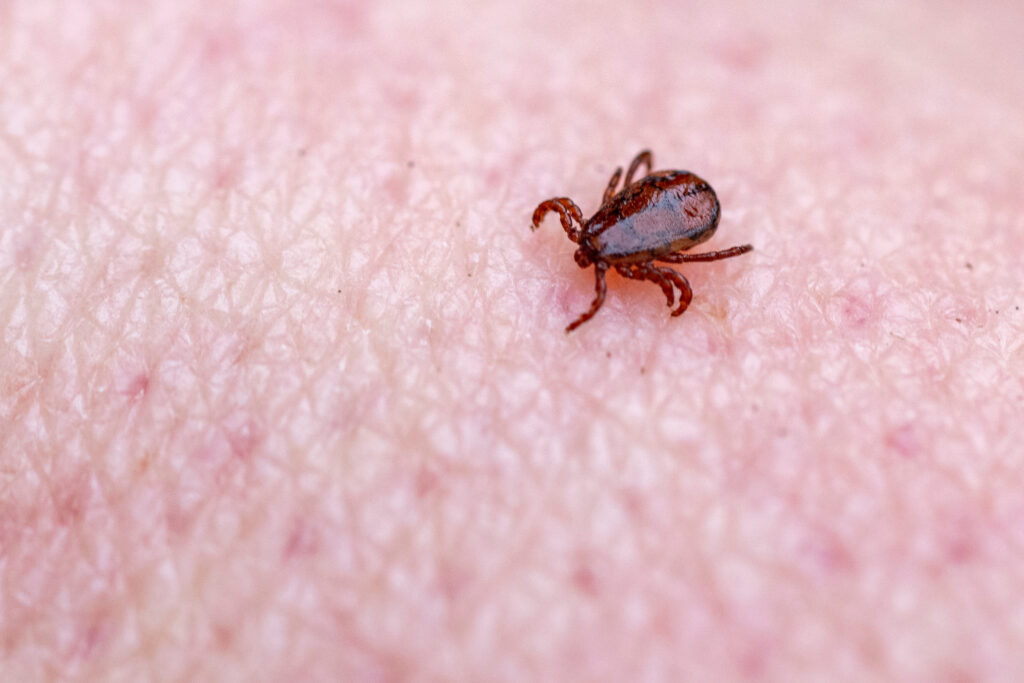Summer months mean increased risks for people, pets
As warmer weather draws more and more Texans outdoors, Texas A&M AgriLife Extension Service experts want people to be aware of the danger ticks pose and offer some advice on how to avoid them.
“Ticks are blood feeders in all life stages and can transmit pathogens that can lead to disease transmission,” said Sonja Swiger, Ph.D., AgriLife Extension entomologist, Stephenville.
Although ticks are active year-round in Texas, there is increased activity during the warmer months when tick populations swell, typically peaking in the summer and then declining in the fall. Swiger said we are at the start of their “plentiful season.”
Where ticks are found
Since ticks can’t fly, the only way to be exposed to them is by entering their space or being in contact with an animal that has picked them up, Swiger said. Unfortunately, ticks can be found pretty much anywhere outdoors.
“They can be in overgrown brush, a field, forest, park, tall grasses and anywhere there is wildlife,” she said.
With school out and people spending more time outside, people are more at risk. And even though ticks primarily live outdoors, they are happy to relocate inside if they can hitch a ride on a human, dog, cat or any other animal that’s headed indoors.
“Even in a concrete jungle, there can be ticks,” Swiger said. “All a tick needs is a blood source.”
Ticks need blood to survive in three of their four life stages. Some types die pretty quickly without a meal, while others can survive for years.
Texas ticks
There are 11 common species of ticks found in Texas. The black-legged tick, brown dog tick, Lone Star tick, Gulf Coast tick and American dog tick are the species most likely to be encountered. Texas A&M AgriLife’s The Tick App for Texas and the Southern Region is a helpful resource and tick identification tool.

Ticks typically like to latch on to people’s head, hair, chest, armpit, groin, waist and back of the knees, so be extra vigilant when checking these areas. Headwear and light-colored clothing that protects as much skin as possible is a good idea if you’ll be where ticks might be present. Light-colored clothing makes it easier to see the ticks that may have hitched a ride. Pants should be tucked into socks and boots to minimize the odds of an unwanted bloodsucker attaching.
“Check yourself after being outdoors,” said Swiger. “Also check your pets if they have been outdoors.”
Swiger said people who let their pets sleep in their bed with them need to be extra vigilant.
Consult your veterinarian about the best preventative measures for your pets, such as pills or topicals that repel ticks. There is also a shot that can be given to dogs to repel ticks.
Tick-borne diseases in Texas
Lyme disease is the most common tick-borne disease in the U.S., with an average of 30,000 cases reported across the U.S. each year to the Centers for Disease Control and Prevention, CDC.
But Texas is a low-incidence state, recording less than 100 cases per year. Lyme disease can also affect pets.
There are numerous other diseases such as Rocky Mountain spotted fever and tularemia that ticks can transmit to people. Ticks are also responsible for deadly diseases in livestock such as cattle fever.
“While we do see tick-borne disease here in Texas, our rates are much lower than many other states,” Swiger said. “However, people need to be aware and vigilant here and when traveling to places with higher rates of transmission. That is the only way to stop them.”
Ticks and red-meat allergy
A disease caused by tick bites that has been in the news more lately is Alpha-gal syndrome, AGS. AGS is associated with a tick bite from the Lone Star tick in the U.S., though it has been associated with other tick species abroad.

AGS, also known as a red meat allergy or tick bite meat allergy, is a potentially life-threatening allergy to red meat that can occur after a tick bite. Symptoms occur when an affected person eats meat or is exposed to other animal products such as gelatin. Anyone who suspects they have developed this allergy and is experiencing symptoms should immediately contact their health care provider and seek medical help.
Most reported cases of AGS in the U.S. are in the South, East and Central states — areas where Lone Star ticks are found. The majority of cases are seen in adults. The CDC reported there were over 110,000 reported suspected cases between 2010 and 2022, but that number could be significantly higher because reporting cases to the CDC is not required.
Tick prevention at home
Around your home, keep lawns mowed, brushy areas trimmed and weeds whacked. Be especially diligent about areas around swing sets, sand boxes and children’s play areas.
Since rodents are part of the tick-borne disease cycle, eliminate places they like to live and hide. Try to avoid having brush piles and keep any building materials and gardening supplies off the ground.
Essentially the neater your yard, the fewer places ticks and the animals that carry them can hide and thrive. A free Texas A&M AgriLife Learn download on ticks is also available online.
Tick removal and when to be concerned
If a tick is found on a person or pet, it can be removed with tweezers. Grasp the tick as close to the head as possible and pull straight out. Do not touch the tick with your bare hands and apply an antiseptic to the skin after removal. The Tick App can offer additional guidance and removal methods.
If the head breaks off under the skin and cannot be removed, or if any pain, lesion or rash develops, contact a doctor. You should also inform your doctor if fever, headache, joint pain, muscle pain or swollen lymph nodes occur within 30 days of a tick bite.
“I don’t want people to worry, I just want people to be aware,” Swiger said. “Take precautions to protect your family and pets and enjoy being outdoors. Just be smart about it.”
PHOTO: With people spending more time outdoors in the summer, all family members should be checked for ticks afterward. (Michael Miller/Texas A&M AgriLife)




